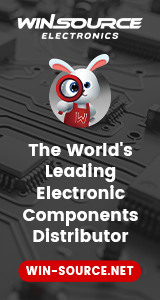Advancing Industrial Control Applications: The Fusion of SMT and THT Industries
Industrial control applications play a vital role in modern manufacturing processes, ensuring precision, efficiency, and reliability in diverse industries. Two significant electronic assembly technologies, Surface Mount Technology (SMT) and Through-Hole Technology (THT), have long been used independently in the manufacturing sector. However, with the continuous evolution of technology, the integration of SMT and THT industries has emerged as a powerful trend, driving innovation, and offering new possibilities for industrial control applications. In this article, we will explore the synergies between SMT and THT, showcasing how their combination enhances industrial control solutions, making manufacturing processes smarter, faster, and more versatile.
1. SMT and THT: An Overview of Complementary Technologies
1.1 Surface Mount Technology (SMT):
SMT is a widely adopted assembly technique where electronic components are mounted directly onto the surface of printed circuit boards (PCBs). Its core advantages lie in its high automation level, smaller footprint, and the ability to accommodate miniaturized components. SMT has been the primary choice for compact and densely packed electronics, making it ideal for applications requiring high-speed and high-volume production.
1.2 Through-Hole Technology (THT):
THT is an older assembly method where electronic components have leads that pass through holes on the PCB, and solder is used to secure the components in place. THT excels in offering robust mechanical connections, making it suitable for components that require high mechanical strength, such as connectors, transformers, and high-power devices.
2. Combining SMT and THT: Unleashing the Full Potential
2.1. Hybrid Assembly:
The integration of SMT and THT techniques enables the realization of hybrid assembly, where both types of components can be used on the same PCB. This approach allows manufacturers to leverage the advantages of each technology, optimizing the PCB layout for better performance and reliability.
2.2. Multi-Functional PCBs:
The fusion of SMT and THT enables the creation of multi-functional PCBs. High-frequency and high-speed components can be mounted using SMT, while power devices and connectors can be securely anchored through THT, resulting in more efficient and compact control boards.
2.3. Enhanced Robustness and Reliability:
By combining the strengths of SMT and THT, industrial control applications benefit from enhanced robustness and reliability. Critical components can be mounted using THT for mechanical stability, while SMT can handle smaller components with precision, contributing to a more resilient end product.
3. Enabling Smart Manufacturing through SMT-THT Integration
3.1. IoT and Industrial Automation:
The SMT-THT combination enables the development of IoT-enabled devices and industrial automation systems. Manufacturers can embed sensors, microcontrollers, and communication modules through SMT, while essential control elements and power components are secured using THT. This integration facilitates seamless data exchange, enabling intelligent decision-making and predictive maintenance in industrial settings.
3.2. Industry 4.0 Advancements:
In the context of Industry 4.0, the convergence of SMT and THT industries plays a crucial role. Smart factories leverage this integration to achieve faster production cycles, real-time monitoring, and adaptive manufacturing processes. The ability to combine SMT's efficiency with THT's robustness results in more versatile and adaptable industrial control applications.
4. Challenges and Solutions
4.1. Design Complexity:
Combining SMT and THT technologies may introduce challenges related to design complexity and manufacturability. Close collaboration between design engineers and manufacturing experts is essential to optimize layouts, ensure proper component spacing, and avoid potential interference issues.
4.2. Refining Manufacturing Processes:
The integration of SMT and THT necessitates refining manufacturing processes to accommodate both technologies seamlessly. Manufacturers should invest in advanced equipment, process optimization, and staff training to leverage the full potential of this fusion.
The integration of Surface Mount Technology (SMT) and Through-Hole Technology (THT) in industrial control applications opens up new possibilities in smart manufacturing, IoT-enabled devices, and Industry 4.0 advancements. By harnessing the complementary strengths of SMT's precision and automation with THT's robustness and mechanical stability, manufacturers can create more efficient, reliable, and versatile control systems. Embracing this fusion, the manufacturing industry can drive innovation, achieve greater productivity, and continue shaping the future of industrial control applications.

 »
»





